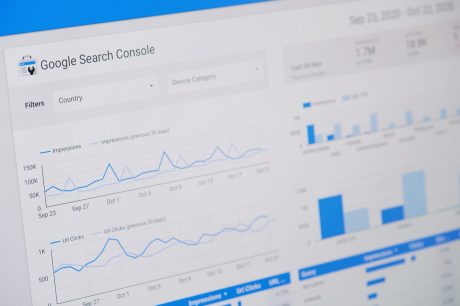Which factors have the biggest impact on mobile-friendliness?
Top 10 factors with the biggest impact on mobile-friendliness. We prepared the list based on the importance of the SEO factors.

Table of Contents
- 1. Responsive design
- 2. Page load speed on mobile
- 3. HTTPs usage
- 4. Readable font size
- 5. Touchscreen readiness
- 6. Meta tags optimized for mobile
- 7. Usage of schema for rich snippets to boost CTR
- 8. Making the most important content accessible above the fold
- 9. Overall UX quality, usability and following best practices, ease of navigation and shareability
- 10. Implementation of table of contents
- Summary
1. Responsive design
A mobile-first approach ensures that a website adapts seamlessly to various screen sizes and orientations, providing an optimal user experience on mobile devices. Optimized CSS code is essential for maintaining a consistent look and feel across different devices. It’s not recommended to create a separate mobile version on an m. subdomain, as this can lead to additional maintenance efforts and eventually duplicate content issues if wrongly implemented.
2. Page load speed on mobile
Page load speed is critical for mobile user experience and is a significant ranking factor in Google’s algorithm. It’s important to focus on optimizing for Core Web Vitals, minimizing the number of HTTP requests, and optimizing and minifying JS, CSS, and HTML code. Usage of modern image formats like WebP or AVIF to reduce image load times is also recommended. Implementing caching can additionally enhance speed and performance for non-static websites. For larger websites with a global audience it’s worth implementing a Content Delivery Network (CDN)..
3. HTTPs usage
Implementing HTTPS is crucial for securing a website and protecting user data. It not only builds trust but also improves search engine rankings, as Google considers HTTPS a ranking factor. It’s worth it to ensure that all pages, including subdomains, are served over HTTPS to maintain security and consistency.
4. Readable font size
It’s worth ensuring that a website’s font size is large enough to be read easily on smaller screens without requiring users to zoom in. This improves the overall user experience and accessibility. Google’s Material Design style guide recommends a base font size of at least 16 pixels for body text to ensure readability.
5. Touchscreen readiness
It’s worth optimizing a website’s interface for touchscreen interactions. This includes ensuring that buttons and links are adequately sized and spaced to prevent misclicks. It’s recommended to implement touch-friendly navigation and avoid hover-based interactions that are difficult to execute on touchscreens. Google recommended target size for touchscreen objects to be 7-10mm.
6. Meta tags optimized for mobile
It’s a good practice to optimize meta tags, including title tags and meta descriptions, to ensure they are concise and relevant for mobile users. Mobile search results often truncate longer tags, so it’s important to front-load important keywords and information.
7. Usage of schema for rich snippets to boost CTR
It’s recommended to Implement schema markup to enhance search listings with rich snippets. This can improve click-through rate (CTR) by making listing more informative and attractive. When possible it’s especially important to use relevant schema types, such as Product, Review, and FAQ, to provide additional context and information to search engines and users.
8. Making the most important content accessible above the fold
It’s recommended to present crucial information and engaging content immediately when the page loads, without requiring users to scroll. This captures attention quickly and ensures that users see the most valuable content right away so that they don’t need to search for it on another website. This can be implemented by adding short (15-30 words) but descriptive intro with the most important information and key highlights section.
9. Overall UX quality, usability and following best practices, ease of navigation and shareability
The point is to let the user easily navigate the website, find the information they need and share it on social media. That’s why the design of the website should be intuitive, user-friendly, and easily shareable. Clear menus and logical information architecture ensure users can find what they need quickly and efficiently. It’s worth
implementing breadcrumbs and related posts to enhance user experience and keep visitors engaged by offering additional relevant content. Additionally, integrate social sharing buttons to make it easy for users to share content on social media platforms. This not only helps users navigate a website with ease but also extends the reach of content, driving more traffic and improving overall site engagement.
10. Implementation of table of contents
A table of contents at the beginning of long articles helps users navigate directly to sections of interest. This improves usability by making it easier for users to find specific information quickly (which is usually a bit harder on mobile). It can also help to get additional links to page sections in the search listing.
Summary
To optimize a website for mobile, ensure a mobile-first responsive design that adapts seamlessly to different screen sizes and avoids separate mobile versions. Prioritize page load speed by optimizing Core Web Vitals, minimizing HTTP requests, and using modern image formats like AVIF or WebP. Implement HTTPS for security and improved rankings, and ensure font sizes are readable, with a minimum of 16px for body text. Optimize for touchscreen navigation with appropriately sized buttons and avoid hover interactions. Use concise, optimized meta tags and implement schema markup for rich snippets to boost CTR. Display important content above the fold, maintain a user-friendly UX with clear navigation, and enable social sharing. Finally, include a table of contents in long articles for easier navigation, particularly on mobile devices.



December 22, 2024 at 9:19 pm |
The focus on responsive design and page load speed is essential in today’s mobile-first world. Implementing HTTPS and using schema for rich snippets are excellent recommendations that can significantly improve security and search visibility.